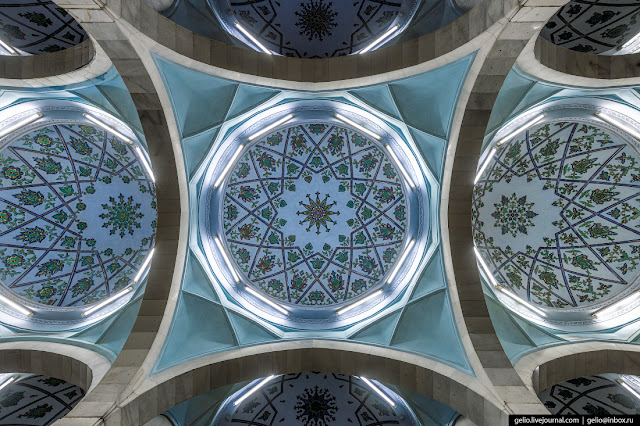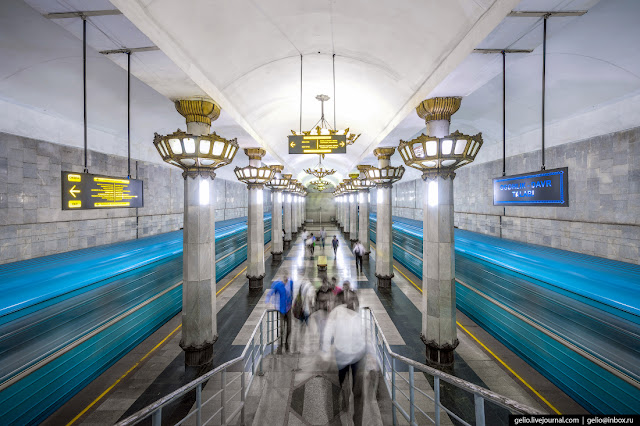The Tashkent metro was opened in 1977 and became the first in Central Asia. Now the metro includes three lines, but in the coming years two more completely above-ground lines are opened. However, the most interesting is hidden below. Thanks to its rich interiors, the Tashkent metro is often called an underground museum.
1. Construction of the metro in Tashkent began in the late 1960s. The subway in Tashkent is shallow. Another feature of the transport system is earthquake resistance. Now there are 29 stations and three active lines in the metro: Chilanzarskaya, Uzbekistan and Yunusabad.
2. “Mustakillik Maidoni” was launched in 1977 as part of the first section of the Chilanzar line. The station is located on Independence Square in the center of Tashkent.
3. “Mustakillik Maidoni”, like other stations of the Tashkent metro, is decorated with national Uzbek ornaments. A metro ride costs 1,400 soums, which is less than 10 Russian rubles or 0.15 US $.
4."Cosmonauttlar" (translated from Uzbek - cosmonauts) is a station on the Uzbekistan line, until 1991 it was called the "Cosmonaut Avenue." The interior is made in blue, blue and white colors. Under the ceiling of the station there is a luminous row of lamps, which symbolizes the Milky Way.
5. “Cosmonavtlar” is decorated with images of the ruler and astronomer Ulugbek, cosmonauts Valentina Tereshkova, Yuri Gagarin, Vladislav Volkov and Vladimir Dzhanibekov. In the photo - the image of the character of ancient Greek myths Icarus, who sought to approach the sun.
6. “Alisher Navoi” - a columned three-span station on the Chilanzar line, it is considered the most beautiful in Tashkent. Named after the famous poet and philosopher of the 15th century.
7.The descent to the station "Alisher Navoi" is decorated with a huge panel with geometric patterns. The interior of the station was created by Uzbek artists.
8. At the station "Alisher Navoi" arch-domed arch. Ornaments are made in national Uzbek motifs.
9. In the current Tashkent metro system, there are three metro bridges through city channels. In the photo there is a bridge between Novza and Milliy God stations.
10. “Bodomzor” - a station on the Yunusabad line, opened in 2001. Near the station are Uzexpocenter and Tashkentland Park.
11. Translated from the Uzbek “bodomzor” - almond grove. Almond trees inspired artists to decorate this station.
12. Pakhtakor is not only the famous football club from Uzbekistan, but also the name of the station. Translated from Uzbek, this word means "cotton grower". Cotton is the most important export commodity of Uzbekistan; the country is among the ten largest producers.
13. At the Yunus Rajabi station, you can transfer from Chilinzarskaya to the Yunusobod line. The station was opened in 2001. Now it is the deepest station in the Tashkent metro system - the laying depth is 24 meters.
14. “Hamid Olimjon” - a station on the Chilinzar line, opened in 1980 and named after the poet of the first half of the 20th century. There are white marble lights in the lobby of the station.
15. The arch of the station “Hamid Olimjon” is divided by ceramic patterns in the national style.
Source | Gelio.livejournal.com
















No comments:
Post a Comment